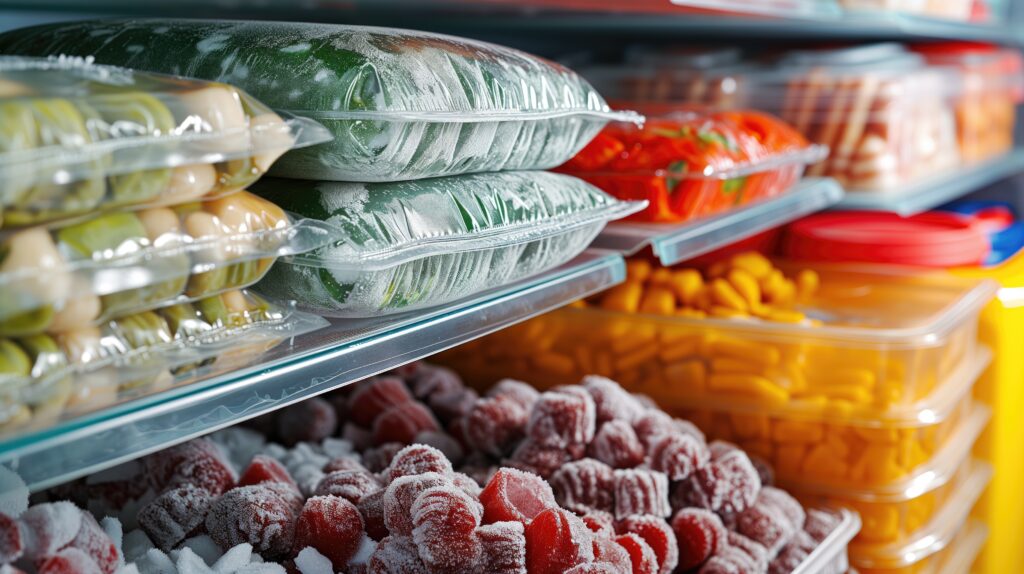Rapid Defrosting

The choice, implementation and monitoring of freezing and defrosting methods are of paramount importance in the quality control of raw materials and processed food products. Traditional defrosting methods introduce a number of problems directly related to heat transfer phenomena:
- Heat transfer is an intrinsically slow mechanism and, the larger the size of product, the longer the time required for the defrosting process; this causes a long delay between the removal of the product from the cold store and the next processing or utilisation stage;
- Since bacteria can survive at negative storage temperatures, in the slow defrosting process there is considerable opportunity for bacteria growth in the product;
- Proportionally high drip losses may result from lengthy defrosting times, causing changes in the product texture and leading to a significant economic loss;
- It is not possible to speed up the defrosting process by increasing the temperature, as this may cause severe deterioration of the product surface;
- Long defrosting time means a batch process is unavoidable, resulting in high handling costs with the additional risk of breakage, bruising and other product damage;
- Since the heat required for defrosting is supplied by air, water or steam in processing rooms or equipment having large contact surfaces with the environment, the process speed is often influenced by the external ambient conditions, which are difficult to control.
The drawbacks of conventional defrosting methods can be avoided thanks to the ability of Radio Frequency (RF) electromagnetic fields to rapidly generate heat volumetrically within the product. The heating process is fast, uniform and controlled, resulting in a significant reduction of drip losses and minimising product deterioration caused by bacterial growth. The RF heating method offers flexibility in the production scheduling and is the ideal solution for many tempering, softening and defrosting processes.
The product is placed on the machine’s conveyor belt and is transferred continuously through the RF unit (tunnel) passing between upper and lower metallic plates. These plates (also called electrodes) form an electrical capacitor and the product in between the plates becomes the dielectric element of that capacitor. The electrode plates are connected to a radio frequency generator oscillating at a frequency of several million cycles per second.
When the RF generator applies high frequency alternating voltage between the capacitor plates, the dipolar water molecules of the frozen product will vibrate and rotate attempting to align themselves according to the fast changing opposite plates polarities. This phenomenon causes intermolecular friction, which will in turn generate heat rapidly and uniformly within the whole product mass regardless of its size, weight, shape and thermal conductivity. The amount of heat generated inside the product and the defrosting time are accurately controlled through the voltage applied on the electrode plates and the speed of the conveyor belt.
- Defrosting is achieved in minutes rather than hours/days, even for large product blocks and, if necessary, directly inside the packaging used for storage or retail distribution (carton boxes, polyethylene bags, etc.)
- The process speed and uniformity minimise the risk of product degradation (drip losses, deterioration of sensorial, chemical and physical characteristics, bacteria growth, etc.), thus helping to preserve at best the product quality
- The product can be obtained at the correct temperature needed for the next stage of processing
- Thanks to the high process speed, radio frequency defrosting can be carried out continuously, with significant logistics advantages in product handling and production scheduling. The production can be organised according to “just-in-time” criteria – a great advantage in the case of sudden orders, last-minute changes in the order or under processing, etc.
- Weather and external ambient conditions do not affect the process, so that it can be controlled accurately and consistently
- Radio frequency equipment requires much less floor space compared to the traditional, large defrosting rooms / equipment; relevant process costs can also be reduced drastically compared to conventional techniques
- Radio Frequency at 27,12 MHz
- Construction in AISI 304 & 316 stainless steel submitted to anticorrosion treatments (passivation, pickling) and shot-peening finish
- Protection level IP65: the external protection boxes of the RF generator are made of insulating sandwich-type panels with sheeting and bearing frame in AISI 304 stainless steel
- Wide conveyor belt (up to 180 cm) made of certified food-grade rigid polyethylene modules or solid-surface reinforced polyester, depending on the product to be processed
- Built-in conveyor belt & tunnel washing facilities and full internal access for cleaning through the multiple side panel doors
- PLC control system for multiple product recipes
- Production capacities can vary depending on the type of product to be defrosted and the final temperature required
- Stalam RF defrosting equipment is available in sizes from 3 kW to 85 kW (output RF power values). Multiple modules can be combined to increase the production capacity even at a later stage as production requirements increase with business growth

